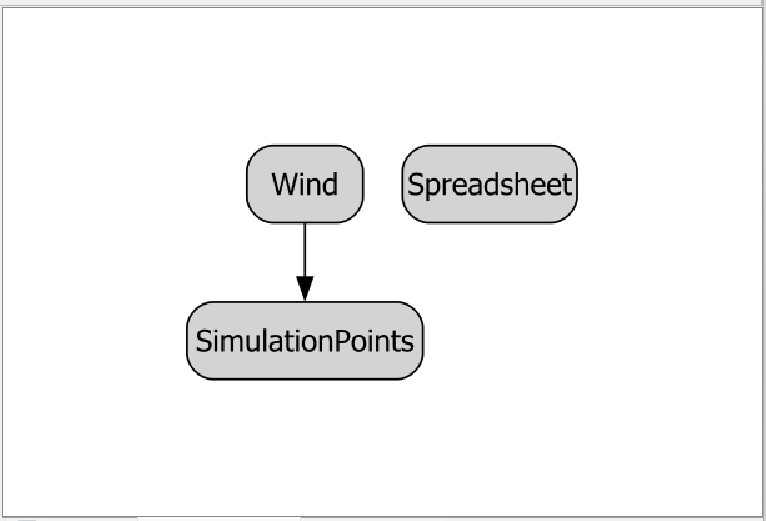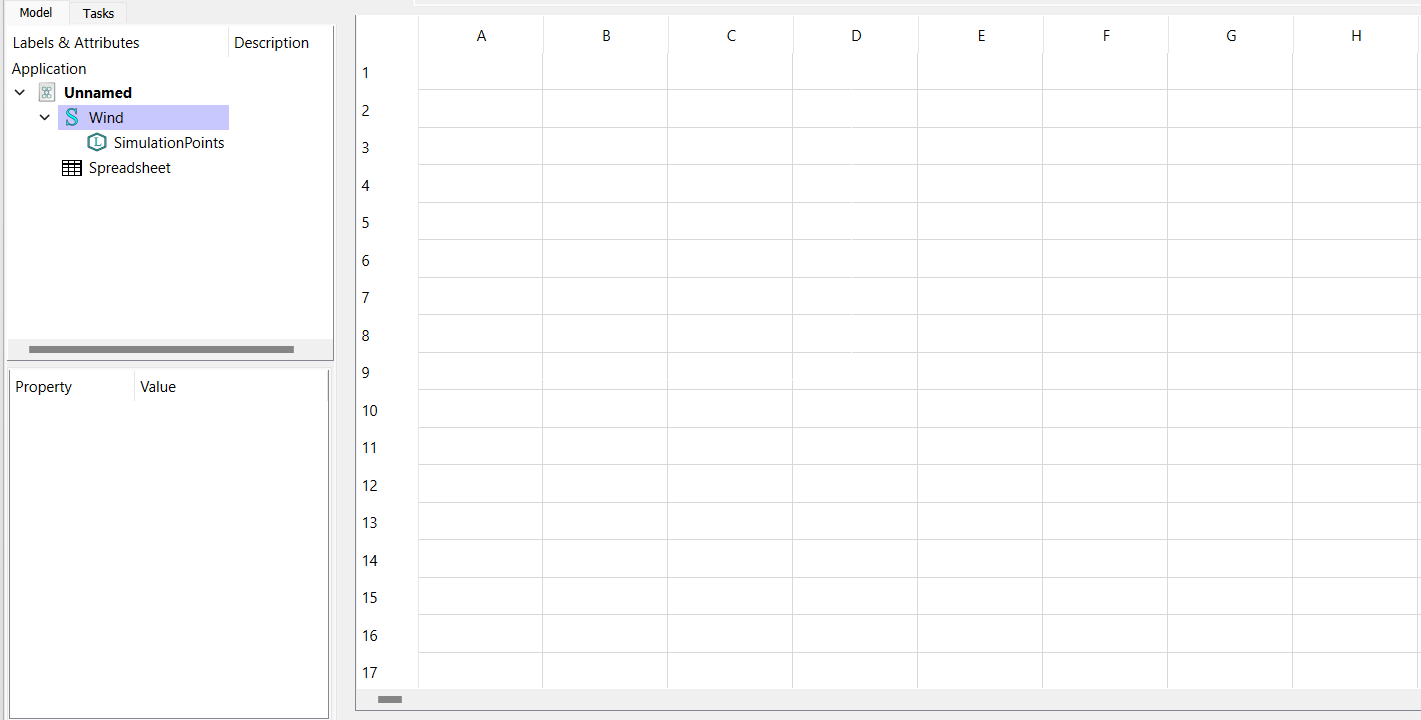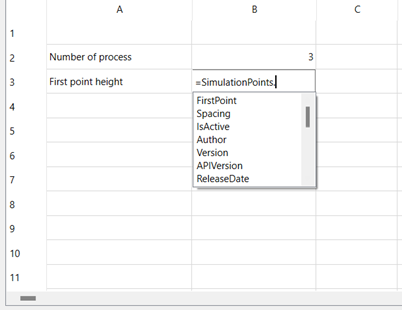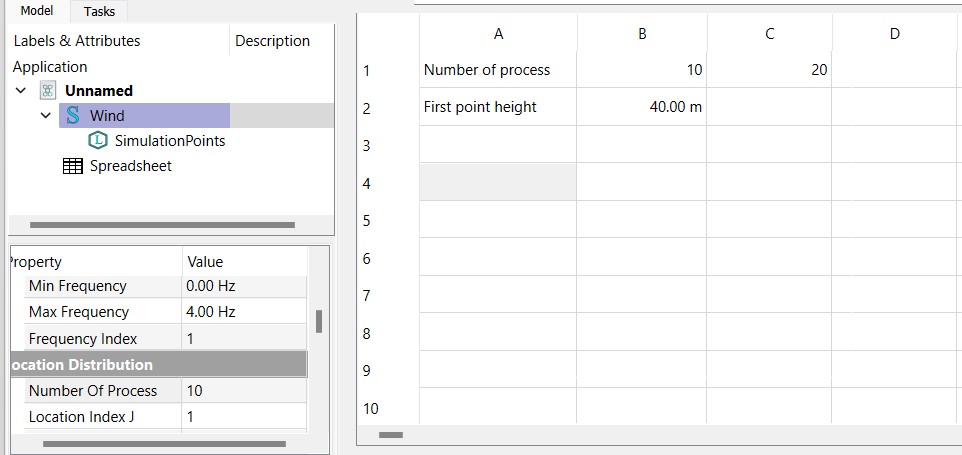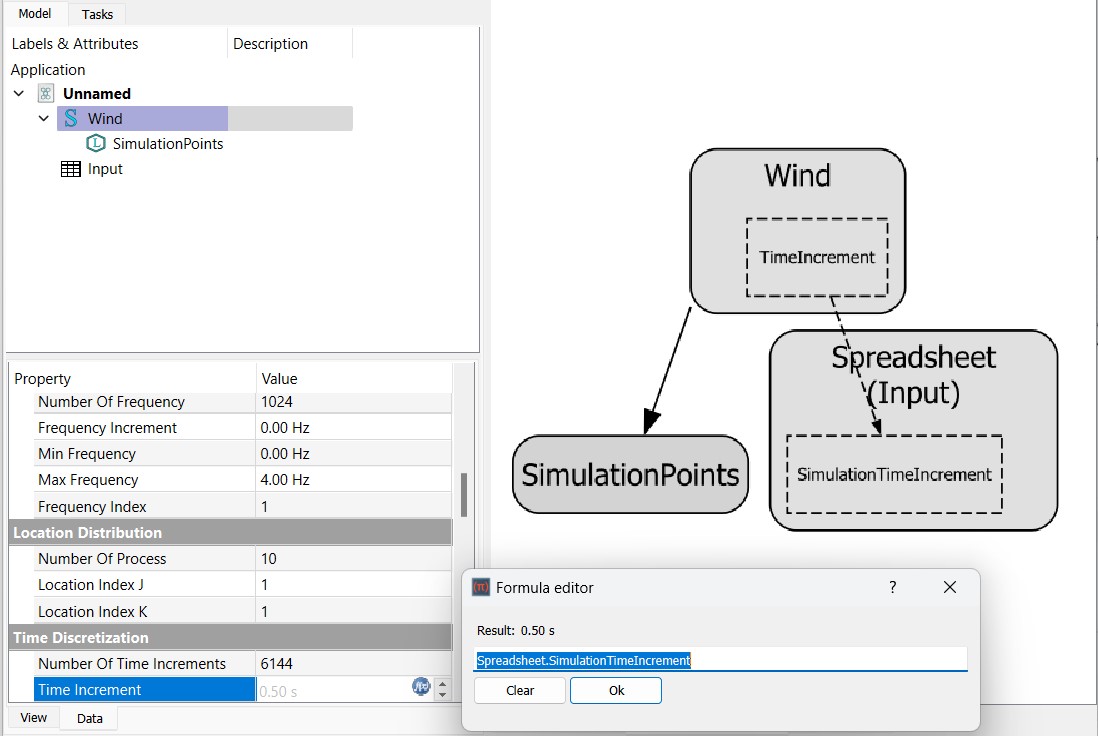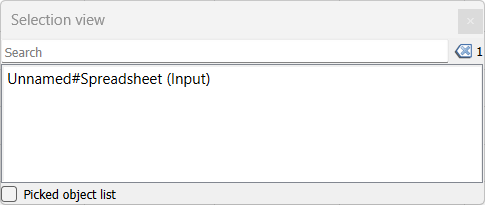Manual:Using spreadsheets
- Introduction
- Discovering LabRPS
- Working with FreeCAD
- Python scripting
The Spreadsheet Workbench in LabRPS allows users to create and manage spreadsheets, such as those made with Excel or Calc from LibreOffice, directly within their projects. It enables inputting, organizing, and manipulating data in a table format, which can then be linked to various parameters in the project.
One of the key advantages is its use in parametric modeling. Spreadsheets can be linked to dimensions and properties of objects, making it an essential tool for dynamic changes. For example, adjusting a value in the spreadsheet will automatically update the corresponding parameter value in a simulation. In addition to managing values, the workbench is excellent for data management, storing critical information such as dimensions, speed, and project-wide parameters. This becomes particularly useful in complex projects where multiple values need to be referenced or adjusted. Spreadsheets also allow users to input formulas for calculations and data management. These formulas can reference other spreadsheet cells or parameters within the document, making the entire simulation process adaptable and responsive to changes.
It can integrate seamlessly with other LabRPS workbenches, allowing interaction between data and simulation features. This integration centralizes control over different aspects of the project, making it easier to manage. The interface is straightforward, resembling traditional spreadsheet software, which makes it familiar and easy to use for those already accustomed to programs like Excel or LibreOffice Calc. In practice, the Spreadsheet Workbench is versatile for different use cases, including defining project-wide parameters, and performing custom calculations that influence design decisions. It simplifies complex projects by centralizing the control of parameters in one location.
In the following example, we will create a couple of featues, retrieve some of their properties in a spreadsheet, then use the spreadsheet to directly drive properties of other objects.
Reading properties
- Start by switching to the
WindLab Workbench, and create a couple of objects: a wind simulation, and a set of simulation points uniformly distributed along an horizontal line.
- Now, let's extract some information about these objects. Switch to the
Spreadsheet Workbench
- Press the
New Spreadsheet button
- Double-click the new Spreadsheet object in the tree view. The spreadsheet editor opens:
Although LabRPS's spreadsheet editor is not as feature-rich as dedicated applications like Excel or LibreOffice Calc, it provides essential tools for most design tasks. Users can adjust cell properties such as size, color, and alignment, and merge or split cells for better organization. Basic formulas, or references to other cells are supported, allowing for simple data manipulation. What sets it apart is its deep integration with LabRPS's simulation environment, where changes in the spreadsheet can automatically update simulation parameters in real-time. While it may lack advanced features like pivot tables or charts, its focus on parametric-driven design makes it a powerful tool for managing design data directly within LabRPS.
In LabRPS, beyond the standard spreadsheet features, there is a particularly useful function: the ability to reference not just other cells, but also objects within the document and extract values from their properties. For instance, you can retrieve properties from simulation objects that are visible in the Data tab of the Properties Editor when an object is selected. This allows for seamless integration between the spreadsheet and the simulation, making it easy to link and automate changes based on the parameters of objects within the design, offering a more dynamic and interconnected workflow.
- Let's start by entering a couple of texts in the cells A1 and A2, so we remember what is what later on, for example Number of process, and First Point Height. To enter text, just write in the "Contents" field above the spreadsheet, or double-click a cell.
- Now let's retrieve the actual number of process from the wind simulation. In cell B1, type =Sim.NumberOfPrecess. You will notice that the spreadsheet has an autocompletion mechanism.
- Do the same for cell B2 (=SimulationPoints.FirstPoint.z).
- Although these results are expressed with their units, the values can be manipulated as any number, try for example entering in cell C1: =B1*2.
- We can now change one of these values in the properties editor, and the change will be immediately reflected in the spreadsheet. For example, let's change the number of process to 10:
The Spreadsheet Workbench page will describe in more detail all the possible operations and functions available in spreadsheets.
Writing properties
Another powerful feature of the Spreadsheet Workbench in LabRPS is the ability to not only read values from the properties of objects but also assign values to them. This allows for controlling the attributes of objects directly from the spreadsheet. However, one of LabRPS’s fundamental rules is that circular dependencies are forbidden—meaning a spreadsheet cannot both read from and write to the same object. Doing so would create a situation where the object depends on the spreadsheet while the spreadsheet also depends on the object, leading to an invalid configuration. To avoid this, a second spreadsheet is typically created to handle writing values, ensuring a clear separation between the reading and writing processes.
- We can now close the spreadsheet tab. This is not mandatory, there is no problem in keeping several spreadsheet windows open.
- Press the
New Spreadsheet button again
- Change the name of the new spreadsheet to something more meaningful, such as Input (do this by right-clicking the new spreadsheet object, and choosing Rename).
- Double-click the Input spreadsheet to open the spreadsheet editor.
- In cell A1, let's put a descriptive text, for example: "Simulation time increment"
- In cell B1, write =o.5s (using the = sign makes sure the value is interpreted as a unit value, not a text).
- Now to be able to use this value outside the spreadsheet, we need to give a name, or alias, to the B1 cell. Right-click the cell, click Properties and select the Alias tab. Give it a name, such as simulationtimeincrement:
[[File:LabRPS Spreedsheet Alias.png]
- Press OK, then close the spreadsheet tab
- Select the cube object
- In the properties editor, click the little
 expression icon at the right side of the TimeIncrement field. This will open the expressions editor, where you can write Spreadsheet.simulationtimeincrement.
expression icon at the right side of the TimeIncrement field. This will open the expressions editor, where you can write Spreadsheet.simulationtimeincrement.
The reason we use "Spreadsheet" instead of "Input" in the expression is that every object in a LabRPS document has a unique internal name and a more user-friendly label. While the label is what appears in the tree view, the internal name is used to uniquely identify objects within the document. LabRPS allows you to assign the same label to multiple objects if you adjust your preferences, but the internal name remains unique. For any operation that requires identifying an object without ambiguity, LabRPS uses the internal name rather than the label, as the label could refer to more than one object. To find the internal name of an object, it's useful to keep the Selection Panel (accessible via View → Panels) open. This panel will always display the internal name of the selected object, ensuring you use the correct reference in your expressions.
By using cell aliases in LabRPS's Spreadsheet Workbench, it's possible to store "master values" within the document, making it easy to manage and modify key parameters. For instance, a spreadsheet can hold the parameters of a simulation, allowing these values to be referenced throughout the simulation. This approach simplifies the process of updating the simulation; if new parameters are required, you can simply open the spreadsheet, adjust the values, and the simulation will automatically update to reflect these changes. This method streamlines versioning and improves efficiency, especially in parametric simulation, where parameters frequently change based on project requirements.
Read more
